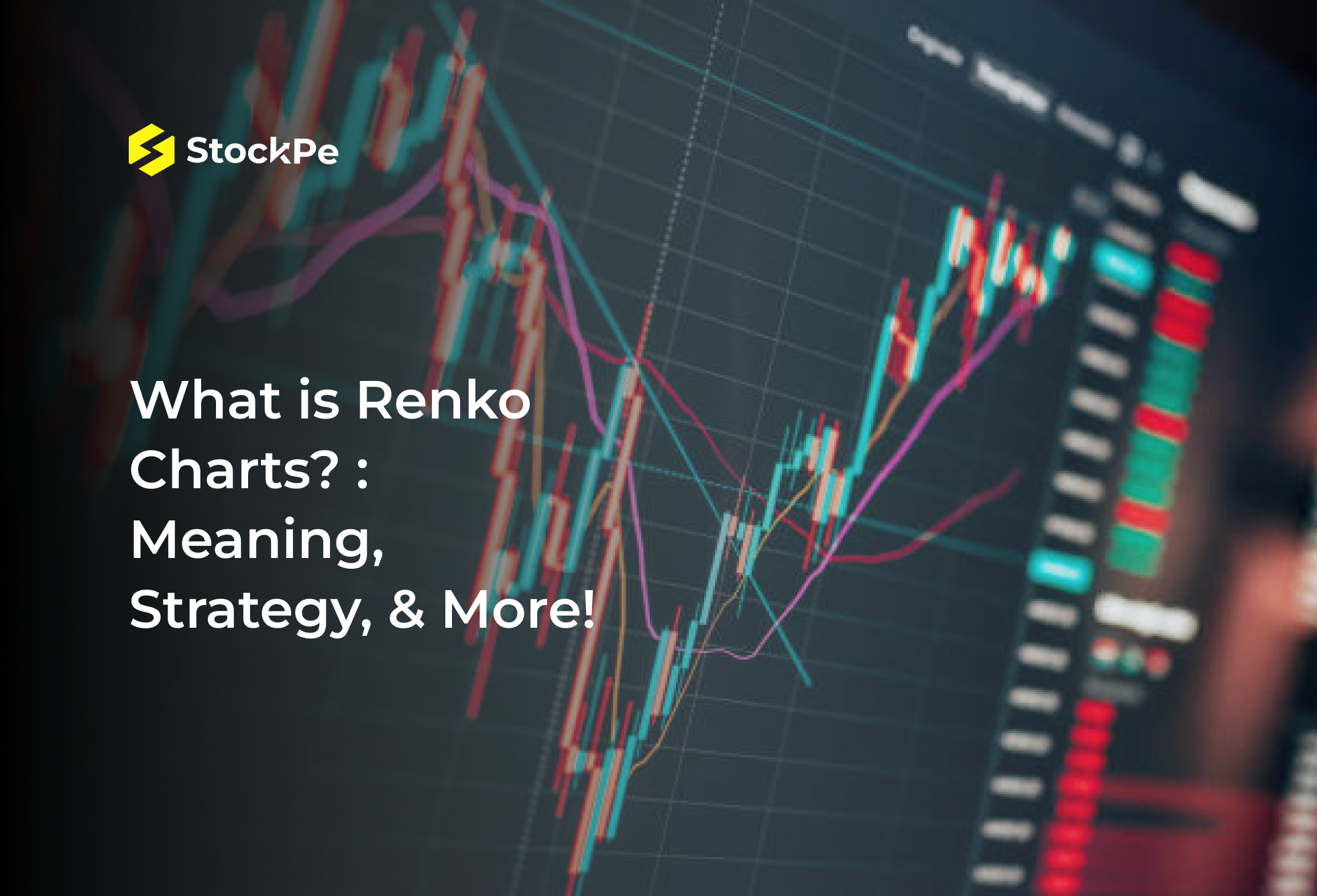Ready to dive into the fascinating world of Renko charts? These unique charting tools have been capturing the attention of traders and investors worldwide. In this guide, we’ll walk you through everything you need to know about renko charts, from their meaning and strategies to practical tips for implementation.
Get ready to unlock a whole new perspective on price movements and discover how renko charts can take your trading game to the next level.
What are Renko Charts?
Renko charts, originating from Japan, are a unique charting method that focuses solely on price movement rather than incorporating standardized time intervals like most traditional charts. The term “renko” is believed to have been derived from the Japanese word for bricks, “renga,” as the chart visually resembles a series of bricks stacked together.
In a renko chart, each renko brick is formed when the price moves a specified amount, disregarding time. The size of the brick is predetermined and remains constant throughout the chart. These renko bricks are positioned at a 45-degree angle to the right of the last brick, forming a distinct pattern.
Typically colored white or green brick represents an upward price movement, while a black or red brick represents a downward price movement. Color coding helps traders easily identify the direction of the price movement and assess the prevailing trend.
Renko charts provide a simplified representation of price action, filtering out the noise of minor fluctuations and focusing on significant price changes. By utilizing renko charts, traders can better understand the underlying market trends and identify critical support and resistance levels.
What does Renko Charts show?
A type of financial charting known as renko charts only considers price movement and disregards time and volume. They are designed to cut through the noise of minor price changes and present a clear picture of the overall trend in prices.
To cut through the noise and focus on price action, renko charts work in conjunction with other technical analysis tools and methods like Heikin Ashi CD.
How to use Renko Charts?
Using renko charts in your trading strategy can provide valuable insights into price movement, support and resistance levels, and overall price action. Here’s a step-by-step guide on how to effectively use renko charts:
Understanding price moves: Renko charts are based on price moves rather than fixed time intervals. Each renko brick represents a specific price movement, such as a certain number of pips or points. By focusing on price moves, renko charts filter out the noise of minor fluctuations and highlight significant market trends.
- Analyzing Renko Bricks
Renko charts make it easier to spot trends and reversals. White or green bricks typically represent upward price movements, while black or red bricks represent downward movements. Identifying High and Low Prices: The upper and lower edges of the brick represent the highest and lowest prices reached during that particular price movement. This information can help you determine critical support and resistance levels and identify potential breakout or reversal points.
- Complementing with Other Charting Techniques
Renko charts can be used with other charting methods, such as Heikin Ashi charts or traditional candlestick charts. By combining different charting techniques, you can comprehensively understand the market dynamics and validate your analysis.
- Conducting Technical Analysis
Renko charts provide valuable price information for conducting technical analysis. You can apply technical indicators, such as moving averages, trend lines, or oscillators, to identify entry and exit points based on renko chart patterns. Technical analysis on renko charts can help you make informed trading decisions.
Renko chart Strategies
Renko charts offer several strategies traders can employ to analyze price movements and make trading decisions. Here are a few popular renko chart strategies:
- Trend Trading
Renko charts are excellent for identifying and trading trends. Traders can look for a series of bricks moving consistently in one direction, indicating a strong trend. They can enter trades in the direction of the trend, either buying during upward trends (white or green bricks) or selling during downward trends (black or red bricks).
- Breakout Trading
Renko charts can help traders identify breakout opportunities when the price moves beyond a critical support or resistance level. Traders can monitor the formation of bricks and wait for a significant price move that breaks through a critical level. Breakout traders can enter positions in the direction of the breakout, aiming to capture substantial price movements.
- Support and Resistance Trading:
Renko charts make identifying support and resistance levels easier. Traders can look for areas where the price consistently fails to break through (resistance) or bounces back (support). When the price approaches these levels, traders can plan their trades accordingly, anticipating a potential reversal or continuation of the trend.
When to avoid use of Renko Charts
Here are some scenarios when it’s best to consider alternative charting methods:
- Volatile Markets
Renko charts may not be ideal for highly volatile markets where price movements are frequent and rapid. Since renko charts only form bricks based on a specific price movement, they may not capture the rapid fluctuations effectively. In such cases, other chart types like candlestick charts or bar charts that incorporate time intervals may provide a more comprehensive view.
- Range-bound Markets
If the market is in a prolonged period of consolidation or exhibiting a narrow trading range, renko charts may not provide much clarity. Renko bricks rely on significant price movements to form, and in range-bound markets with minimal price volatility, bricks may not form frequently enough to offer meaningful insights.
- Fundamental Analysis
Renko charts primarily focus on price movements and technical analysis. If your trading strategy relies heavily on fundamental analysis, such as analyzing economic data, news events, or company fundamentals, renko charts may not be the most appropriate tool.
Right time to use Renko Charts
- Trend Identification
Renko charts excel at highlighting and confirming trends. When the market exhibits clear and sustained price movements, renko charts can provide a simplified and visual representation of these trends, making them ideal for trend identification and trend-following strategies.
- Levels of Support and Resistance
Key support and resistance levels are easier to spot on renko charts. They are useful for support and resistance trading strategies because they can help traders pinpoint these levels with greater precision.
- Analysis of Price Change
Renko charts remove noise and focus on price action. Traders are able to concentrate on the most important aspects of price action because they present a clear and uncluttered view of the movements in the prices.
Conclusion
In conclusion, renko charts provide a powerful tool for traders to analyze price movements, identify trends, and locate critical support and resistance levels. By focusing on price moves rather than fixed time intervals, renko charts filter out the noise and make it easier to spot significant price movements.
Renko charts excel at displaying high and low prices within each brick, making it possible for traders to identify crucial levels at which the price may encounter obstacles or reverse direction.
Traders can improve their comprehension of market dynamics, their capacity to identify support and resistance levels, and their ability to make more precise trading decisions based on price movement by incorporating Renko charts into their analysis.
By combining these insights from different charting techniques, traders can comprehensively understand the market dynamics and make more informed trading decisions.





